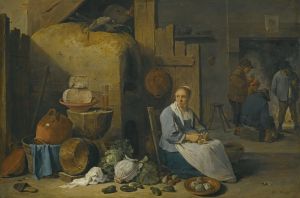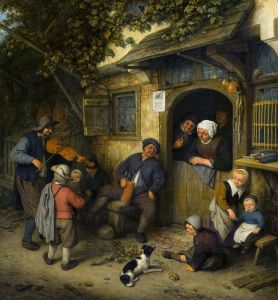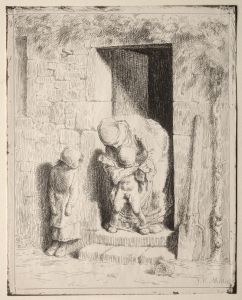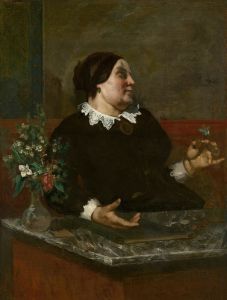
Les planteurs de pommes de terre
A hand-painted replica of Jean-François Millet’s masterpiece Les planteurs de pommes de terre, meticulously crafted by professional artists to capture the true essence of the original. Each piece is created with museum-quality canvas and rare mineral pigments, carefully painted by experienced artists with delicate brushstrokes and rich, layered colors to perfectly recreate the texture of the original artwork. Unlike machine-printed reproductions, this hand-painted version brings the painting to life, infused with the artist’s emotions and skill in every stroke. Whether for personal collection or home decoration, it instantly elevates the artistic atmosphere of any space.
Jean-François Millet's Les planteurs de pommes de terre (The Potato Planters) is a painting created in 1861 by the French artist, who is renowned for his depictions of rural life and the working class. Millet was a leading figure in the Barbizon School, a group of 19th-century painters who focused on realistic portrayals of nature and peasant life, often emphasizing the dignity and hardships of agricultural labor.
This painting depicts two peasants planting potatoes in a field, a theme consistent with Millet's focus on the lives of rural workers. The figures are shown bent over their work, emphasizing the physical effort and repetitive nature of their labor. The earthy tones and muted palette used in the painting reflect the simplicity and harshness of their environment. Millet's attention to detail in the figures' posture and clothing highlights the authenticity of the scene, while the expansive field and distant horizon evoke a sense of isolation and the vastness of rural life.
Les planteurs de pommes de terre is part of Millet's broader exploration of agricultural themes, which include other well-known works such as The Gleaners (1857) and The Angelus (1857–1859). These paintings collectively underscore Millet's interest in the relationship between humanity and the land, as well as his respect for the resilience of the working class. His work often carried a sense of solemnity and reverence for the laboring poor, which resonated with the social and political climate of mid-19th-century France, a period marked by significant upheaval and changes in rural society.
The painting is currently housed in the Museum of Fine Arts in Boston, Massachusetts. It was acquired by the museum in 1917 and remains an important part of its collection of 19th-century European art. The work is celebrated for its ability to convey both the physicality and the quiet dignity of agricultural labor, making it a significant example of Millet's contribution to the Realist movement in art.
Millet's portrayal of rural life has had a lasting impact on art history, influencing later artists such as Vincent van Gogh, who admired Millet's ability to find beauty and meaning in everyday scenes. Les planteurs de pommes de terre continues to be appreciated for its poignant depiction of human toil and its connection to the natural world.


















